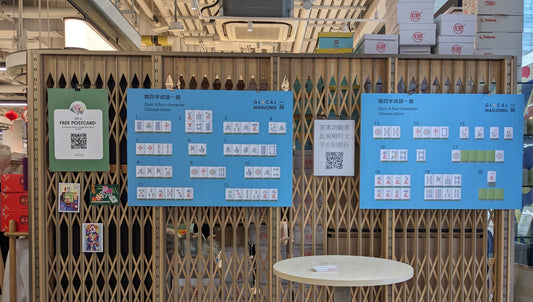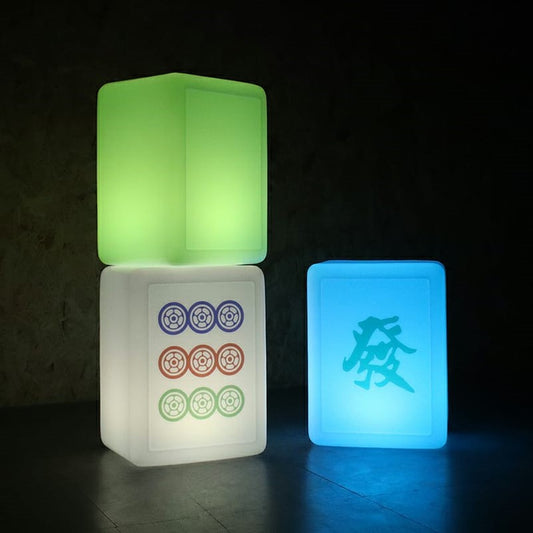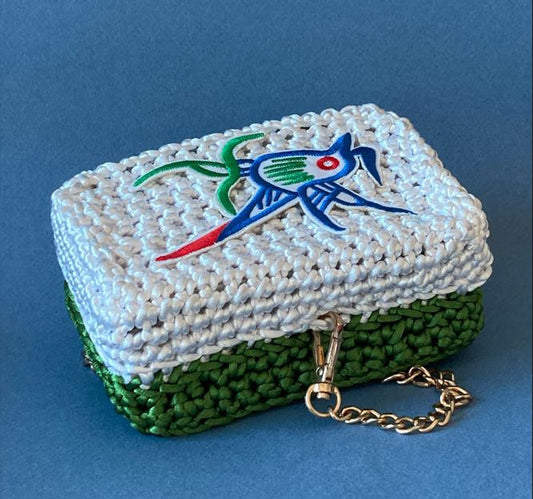Mahjong X Carving Art
Mahjong could be a medium for many forms of art. It could be used to build sculptures or as small canvases for paintings and engravings or be the subject for literary and visual arts. In the process of making mahjong, art and craft are involved in engraving the graphics and words on bamboo and later plastic tiles, and then inlaying the engraved recesses with paint.
As an architect and designer, art is very important. Versus doing jobs for clients to earn living, doing art is a bit like scientists taking initiatives to do research for personal growth and development. It makes one know his passion and edges and get prepared for chances, and many of my ventures start from these no-purpose art creations.
Let’s get back to the subject of carving art. Despite the fact that I have learnt for a short time the traditional skill of engraving the Chinese seals, it is far from easy to engrave mahjong after trying it. To take the wear and tear in shuffling and discarding, mahjong tiles are mostly made in a very hard thermosetting plastic, melamine. To carve the circles and lines for the dot and bamboo suits, special tools are needed while carving the characters requires long years of practice and training. With the mass production process of making mahjong tiles by casting plastic on mould and the use of laser in cutting graphics on the mahjong tiles, the traditional craft of engraving mahjong tiles is vanishing as people are no longer easy to make a living out of it and few people are prepared to take years in picking up the skill.
Karen is the daughter of a mahjong maker Xifu, Mr Ricky Cheung. These traditional Xifu are no longer easy to find in Hong Kong. Being an illustrator, Karen created a creative brand Karen Aruba with mahjong in JCCAC hoping to share the art and craft of mahjong through workshops led by his father and her own artistic creations. She has recently run an art show, Beyond Borders of Mahjong in the gallery, HK Imaging in Wanchai.
The process of carving mahjong involves some special tools. But before we start, Master Cheung shared a tip to make the mahjong softer and easier to carve by warming them up over a light box. For making the dots, special hand drills are used. To make the bamboo tiles and the rectangular frames of the white tiles, knives with paired teeth are used while more traditional carving knives held at a low angle are used in making the free-form characters, bird and flower tiles. Experienced people like Master Cheung do not need to draft any outlines in advance and carve directly onto the tiles. After the carving, the recesses are painted and then shaved off to become colour inlaid.
The closest form of art related to this is the traditional Chinese art of seal engraving, which was added to the List of intangible cultural heritage by UNESCO in September 2009. The seal engraving art is considered an extension of ancient Chinese calligraphy descended from the engraving inscriptions on tortoise shells. The Chinese seal art is vanishing because seals are no longer part of our daily life as representations of signatures except for those Chinese painter use them to sign off their paintings. Nevertheless, it is such an interesting art to appreciate, learn and share. Masters like齊白石have brought the art to such a height that it becomes an abstract art regardless of their semiotic meanings. The body materials like special stones, jade and ivory have also become collectables on their own. Important seals, like those used by the king, not only carved in valuable materials like jade, but could also be cast in metal.
Chinese seals got two forms, those with character lines and strokes appear positively as Yang or Zhuwen 朱文(meaning words in red) and those with characters appear as negative recesses as Yin or Baiwen 白文(meaning words in white), just like the engraving of mahjong tiles. Versus mahjong which people read direct as how they are engraved, seals are carved in mirror images so that they can be read normally after stamping. The contents of seals range from identities of individuals, private studios and authorities, to graphical and free expressions of personal philosophy or literary inclination.
I see mahjong as a potential medium to rejuvenate the traditional art of the Chinese seal. But knowing the difficulty for most people in carving very hard plastic, I have tried a different process. I first started carving in softer materials like plaster and then casting them into resin tiles by going through an intermediate process of the silicone mould. Apart from overcoming the difficulty in carving, this process also allows people to create not only line art but also more sculpture-like reliefs. One may create tiles for his own name, words and pets. The making of silicone moulds also allows people to reproduce these tiles into gift items like key chains or even pairs of artistic earrings. Hope we can do some demo for these in future episodes.
This proves again the potential of mahjong as a medium for creativity.



